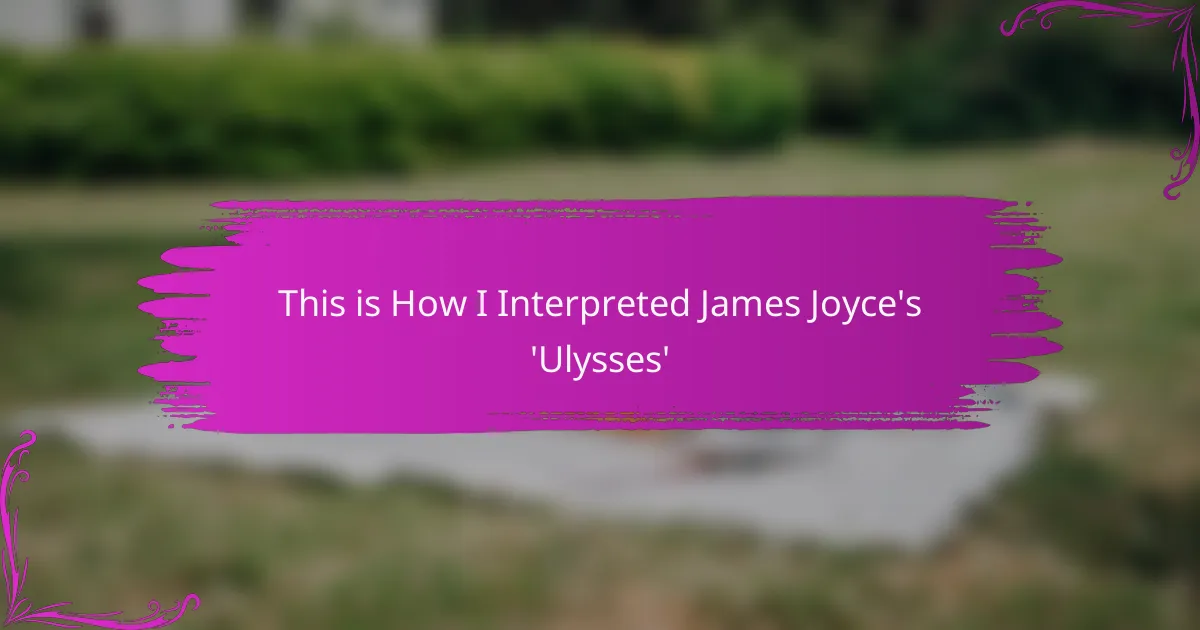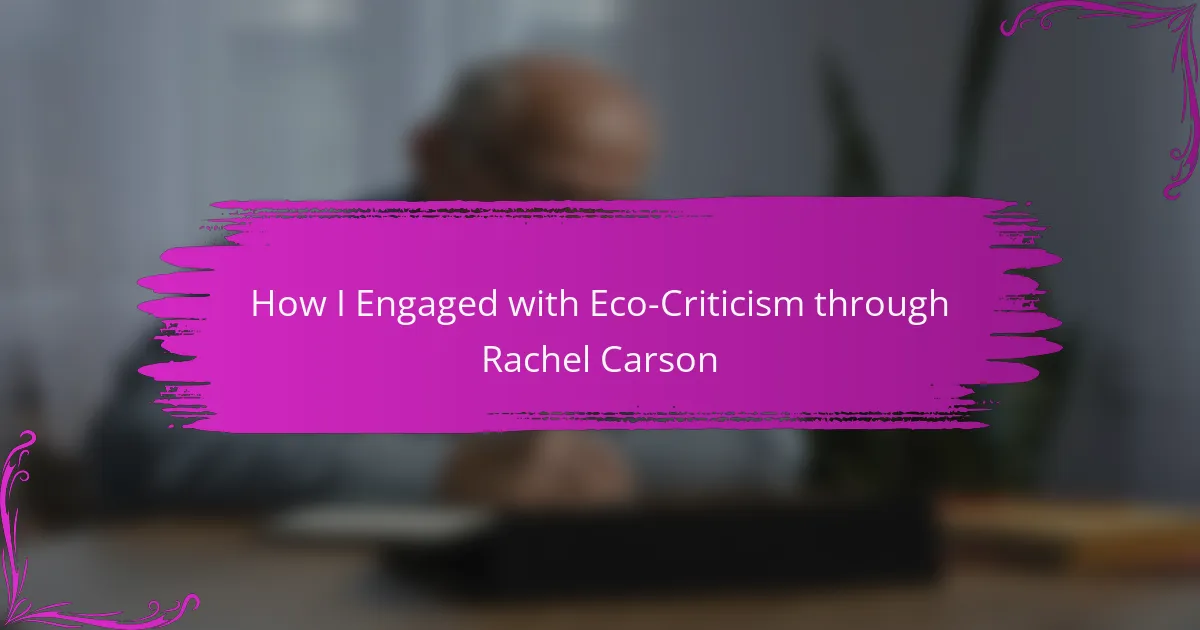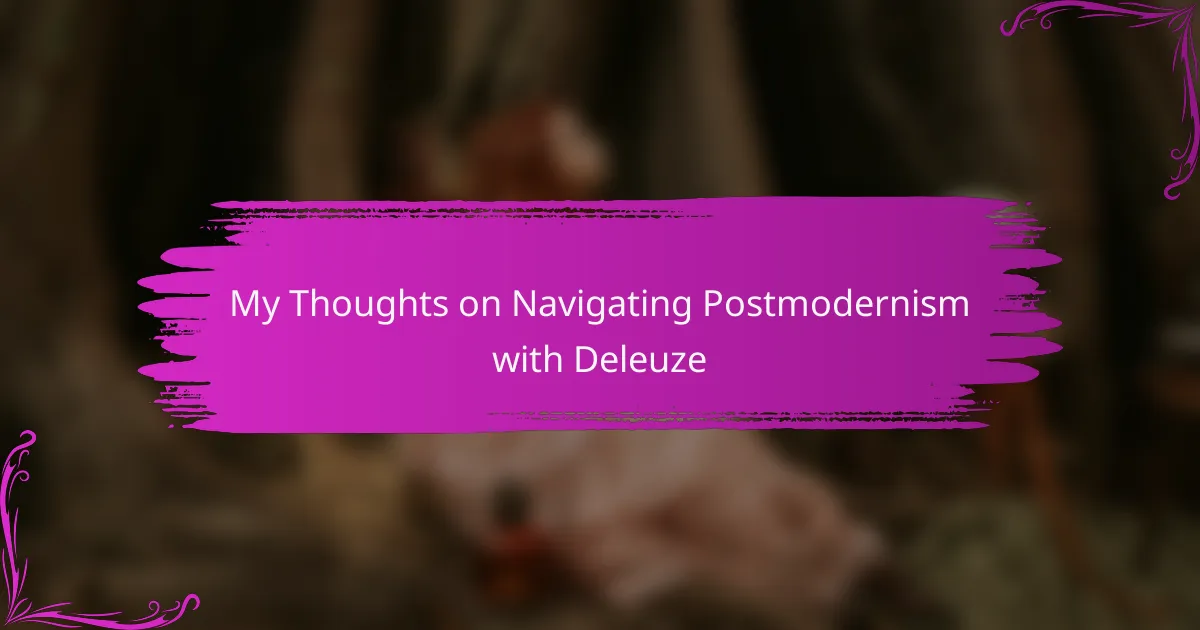Key takeaways
- James Joyce’s “Ulysses” employs a stream-of-consciousness technique that reflects the intricacies of human thought and experience, making it relatable and complex.
- The novel explores key themes such as identity, belonging, and the significance of everyday life, encouraging readers to find depth in the mundane.
- Effective methods for teaching “Ulysses” include breaking the text into manageable sections, encouraging personal reflections, and incorporating multimedia resources to enrich understanding.
- Recommended resources, such as the “Cambridge Companion to James Joyce” and various online courses, can enhance the reading experience by providing critical insights into Joyce’s work.
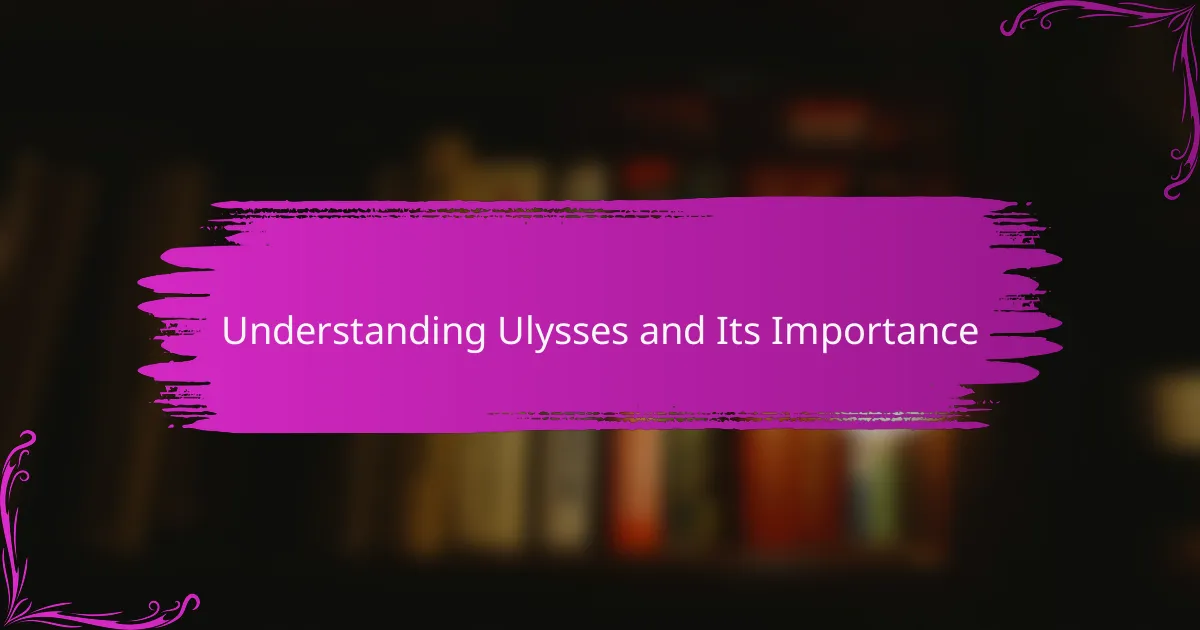
Understanding Ulysses and Its Importance
Understanding Joyce’s “Ulysses” can feel like navigating a labyrinth. From my experience, each page invites readers to explore the depths of human consciousness. Joyce’s ability to map the ordinary, everyday moments of life in Dublin while weaving in rich literary allusions makes this work not only complex but profoundly relatable.
One thing that resonates with me is the stream-of-consciousness technique Joyce employed. It captures the chaos of thoughts that races through our minds—something I think everyone can appreciate. Reading “Ulysses” is like entering a dialogue with oneself, filled with insights about identity, time, and experience.
The importance of “Ulysses” extends beyond its narrative; it challenges readers to rethink traditional forms of storytelling. Engaging with Joyce’s work offers a chance to reflect on our own lives, which can be both exhilarating and daunting.
| Feature | “Ulysses” |
|---|---|
| Published | 1922 |
| Structure | Innovative, stream-of-consciousness |
| Main Character | Leopold Bloom |
| Setting | Dublin, Ireland |
| Themes | Identity, Time, Everyday Life |
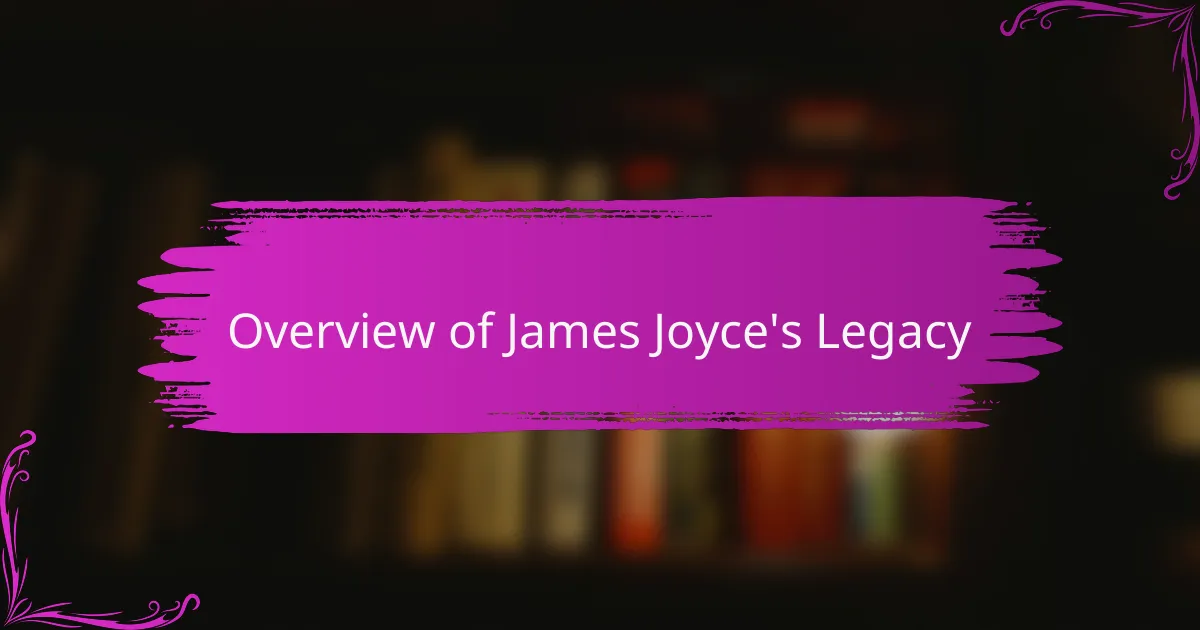
Overview of James Joyce’s Legacy
James Joyce’s legacy is profound and layered, marked by his innovative narrative techniques and exploration of the human experience. His works often dissolve conventional boundaries of storytelling, pulling readers into deep, internal landscapes. I remember the first time I read “Ulysses”; it felt like I was walking alongside Leopold Bloom, absorbed in his thoughts and emotions, which inspired me to look deeper into my own daily experiences.
The vivid characters and stream-of-consciousness style Joyce employed not only redefined modern literature but also challenged me to think about how we perceive time and memory in our own lives. Joyce’s ability to intertwine existential themes with the mundane is something I’ve carried into my own writing, finding beauty in everyday moments.
| Aspect | James Joyce |
|---|---|
| Innovative Style | Stream-of-consciousness, fragmented narrative |
| Notable Works | Ulysses, A Portrait of the Artist as a Young Man |
| Themes | Identity, time, human experience |
| Influence | Foundational figure in modernist literature |
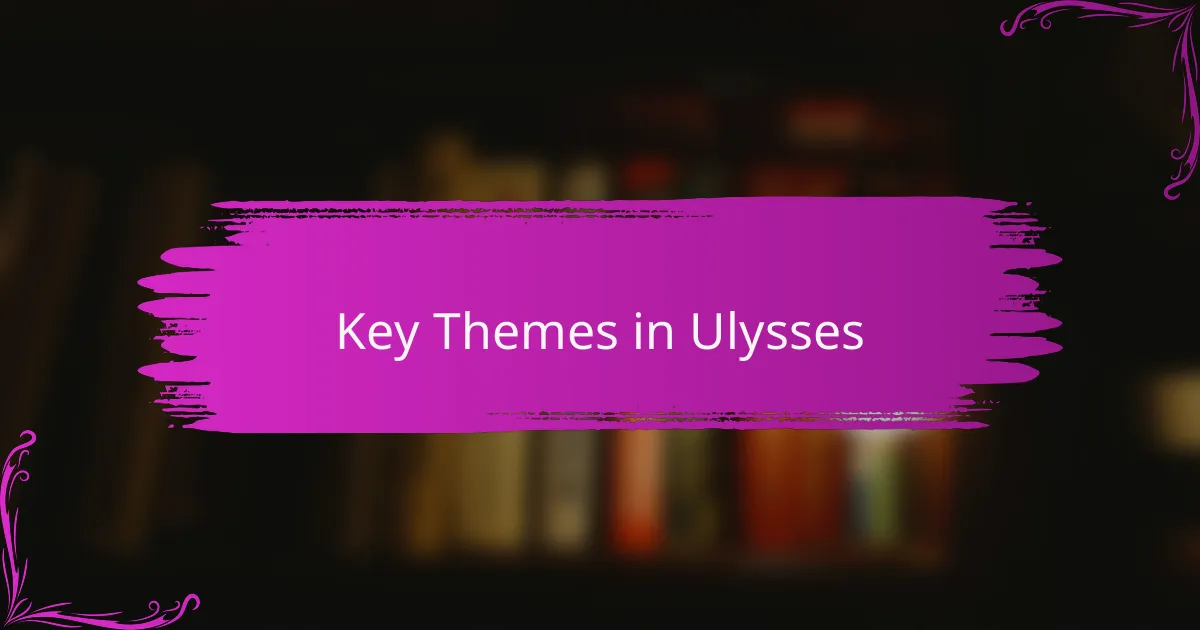
Key Themes in Ulysses
In interpreting the key themes of James Joyce’s “Ulysses,” I can’t help but feel a profound connection to the exploration of identity and self. For me, the character of Leopold Bloom embodies the eternal quest for belonging. I remember the first time I read his story; it resonated deeply, especially his mundane daily life juxtaposed with profound inner thoughts. It made me reflect on my own experiences and how the ordinary can hold extraordinary significance.
Another critical theme is the intertwining of the mundane and the mythic. Joyce masterfully blends the everyday actions of his characters with echoes of Homer’s “Odyssey.” This layering of narratives is something I find fascinating. In my own readings, I’ve often felt like Joyce was prompting me to look for the epic within my daily routines. It encourages me to view the simple moments as part of a larger journey, much like Bloom’s day in Dublin.
- The search for identity and belonging
- The theme of exile and homeland
- The significance of everyday life
- The connection between the mundane and the monumental
- Relationships and human connections
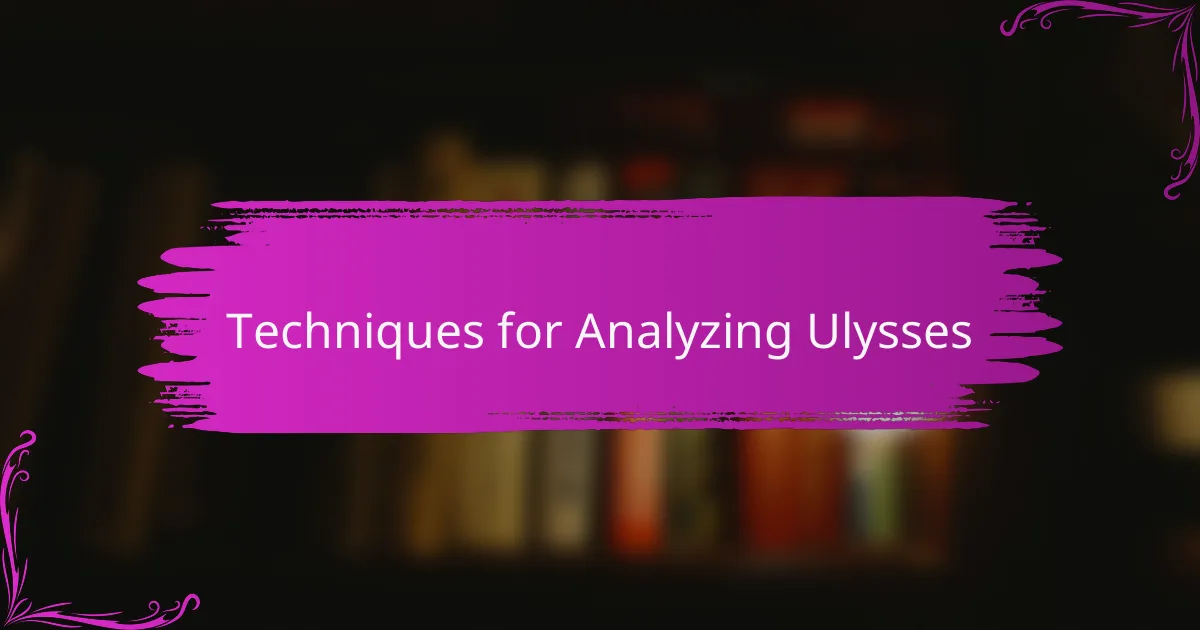
Techniques for Analyzing Ulysses
When I first approached “Ulysses,” I realized that Joyce’s stream of consciousness technique is a crucial element for analysis. It immerses the reader fully in the characters’ inner thoughts and feelings, making the reading experience almost voyeuristic. I remember grappling with this stylistic choice; it felt both disorienting and liberating, like diving into an ocean of thoughts without a life raft.
Additionally, paying attention to the rich use of symbolism can unlock deeper meanings in the text. For instance, the recurring motifs of water and day-to-day experiences reflect the characters’ emotional currents and the passage of time. I found it rewarding to analyze how these symbols contribute to the overall themes of identity and discovery.
- Stream of Consciousness: Examine how Joyce captures characters’ thoughts and the effect on narrative flow.
- Symbolism: Identify symbols like water and time, and explore their meanings.
- Parody and Allusion: Consider how Joyce references classic literature, infusing layers of meaning.
- Contrast of Ordinary Events: Analyze how mundane actions are presented as monumental through Joyce’s lens.
- Intertextuality: Look for connections with other works, enriching the reading experience.
Each of these techniques offers a unique lens, helping to uncover the complex web of ideas Joyce weaves throughout “Ulysses.” Engaging with these elements has not only deepened my appreciation but also made the text resonate on a personal level, fostering a connection I hadn’t anticipated.
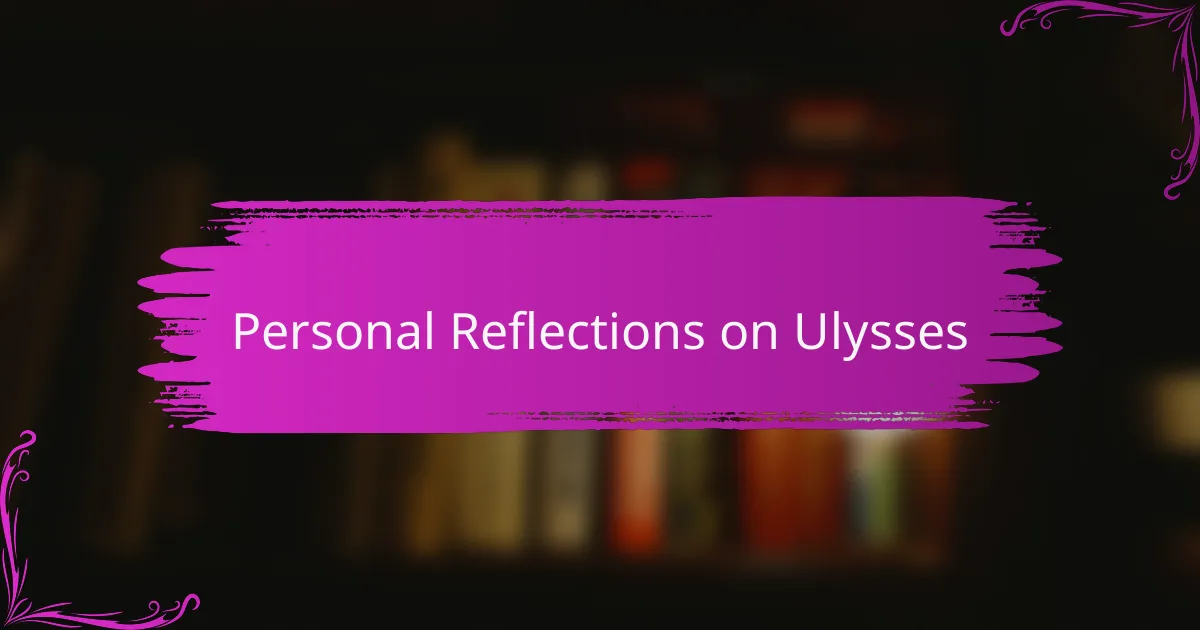
Personal Reflections on Ulysses
There’s something deeply personal about reading “Ulysses” that I didn’t anticipate. As I followed Leopold Bloom through the bustling streets of Dublin, I found myself reflecting on my own daily rituals. It’s intriguing how Joyce captures those seemingly ordinary moments—buying a sandwich, looking at a woman. Those fragments of life stirred my own memories, reminding me that the mundane can be yet profoundly significant.
One of my most vivid memories of reading this novel was hitting the “Circe” episode late at night. The narrative felt dreamlike, almost surreal. It left me grappling with my own thoughts about reality and perception. I wondered, how often do we see the world through a haze of our own imaginings? Joyce’s ability to blend fantasy with everyday life encouraged me to embrace the chaos of my own experiences—not to shy away from them but to explore the deeper meanings they might hold.
Reflecting on the themes of identity and belonging, I was struck by how Bloom’s search mirrors our own journeys. I remember a time when I felt out of place, much like Bloom wandering through Dublin. Joyce made me realize that we all crave connection, even in the most ordinary moments. His work inspired me to be more curious about those around me, to look beyond the surface, and to appreciate the shared struggles of our humanity.
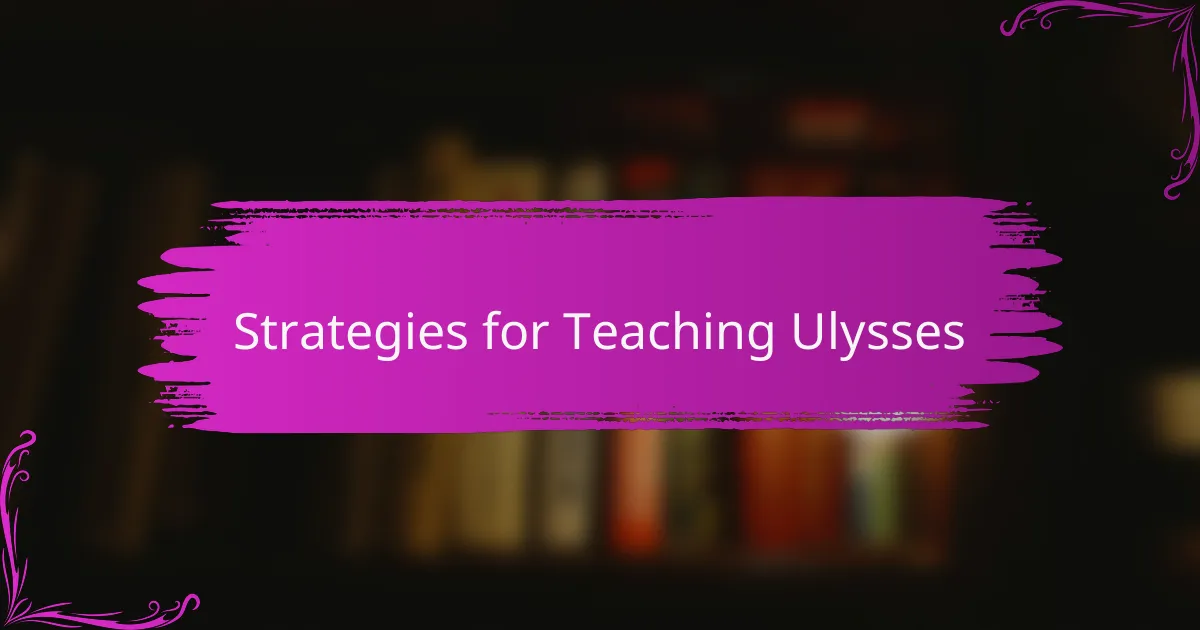
Strategies for Teaching Ulysses
Teaching “Ulysses” can be a rewarding challenge, and one effective strategy is to break the text down into manageable sections. I’ve found that focusing on specific episodes, like “Nausicaa” or “Penelope,” helps students engage with the themes without feeling overwhelmed. By analyzing these passages individually, they can appreciate how Joyce employs language innovatively while still making connections to the larger narrative.
Another method I’ve employed is to encourage students to draw parallels between their own lives and the experiences of Leopold Bloom. During class discussions, I often ask, “What moments from your day resonate with Bloom’s journey?” This approach creates an intimate connection with the text, prompting students to reflect on the significance of the ordinary in their own lives. It’s fascinating how these discussions often lead to revelations about identity and human connections.
Incorporating multimedia resources can also enhance understanding. I remember showing clips from adaptations of “Ulysses” to illustrate how different interpretations of Joyce’s work can unfold. This not only brings the text to life but also sparks interesting debates about the choices made by directors. Engaging with various interpretations helps students appreciate the richness of Joyce’s writing while fostering a collaborative learning environment.
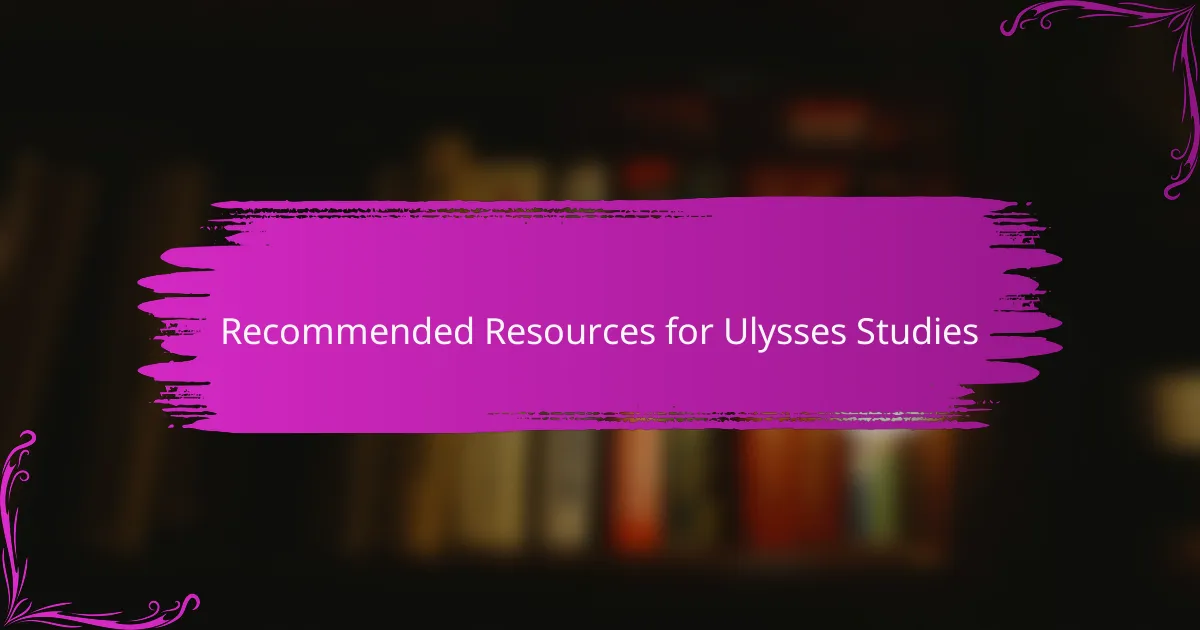
Recommended Resources for Ulysses Studies
When diving into the complexities of James Joyce’s “Ulysses,” I found a wealth of resources that illuminated different aspects of the text. Engaging with various commentaries deepened my understanding, especially those that unravel the intricate layers of symbolism and stream-of-consciousness narrative Joyce is famous for. Using these resources not only enhanced my appreciation of the novel but also made my reading experience profoundly enriching.
One tool I found invaluable is the online course offerings, which often feature passionate educators who bring the text to life. I remember sitting in one session, captivated by how a seasoned professor connected passages from “Ulysses” to broader themes in literature and life. It was like having a guiding hand through the dense jungle of Joyce’s prose. Here are some recommended resources that can help you navigate “Ulysses”:
- “The Cambridge Companion to James Joyce”: A collection of essays that provide critical perspectives.
- “Ulysses Annotated” by Don Gifford: A comprehensive guide that explains the novel’s references and allusions.
- “Joyce’s Ulysses: A Study” by Stuart Gilbert: An insightful analysis that breaks down the novel’s structure and themes.
- Podcasts like “The Joycestick”: Engage in lively discussions about “Ulysses” with insights from fellow Joyce enthusiasts.
- Online MOOCs dedicated to “Ulysses”: Various universities offer free courses that guide you through the text’s challenges and complexities.
Exploring these resources will not only deepen your understanding of “Ulysses” but also personalize your journey through Joyce’s brilliant mind.
